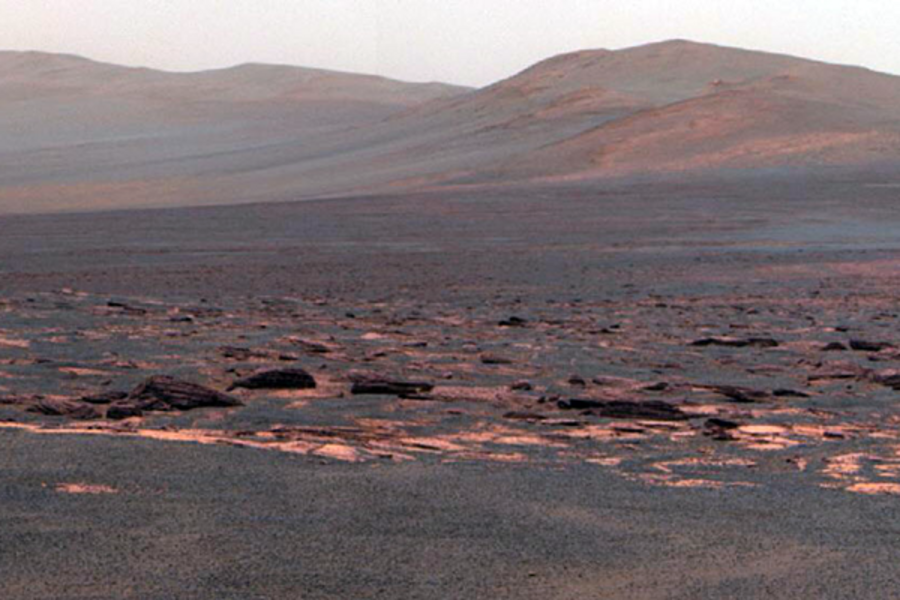Mars soil and rocks unlike any seen by rover so far
Loading...
| LOS ANGELES
The Mars rover Opportunity is snapping pictures like a tourist since arriving at its latest crater destination, much to the delight of scientists many millions of miles (kilometers) away.
The solar-powered workhorse beamed back images of the horizon, soil and nearby rocks that are unlike any it has seen during its seven years roaming the Martian plains.
Opportunity is doing more than just sightseeing. It recently spent a chunk of time using its robotic arm to investigate a flat-topped boulder that likely formed in a hydrothermal environment.
Scientists were giddy with excitement Thursday — a tone reminiscent of the mission's early days.
"Mars is a very complex planet, a very diverse place," said chief scientist Steve Squyres of Cornell University. "We're seeing some of that diversity here."
After a three-year drive, the six-wheel rover finally rolled up to the western rim of Endeavour Crater in early August to begin a new chapter of exploration.
Project managers chose the locale because it's older and different than previous spots Opportunity has visited. The view from orbit reveals tantalizing evidence of clay deposits believed to have formed in a warm and wet environment early in Mars' history.
The next task is to head north in search of more ancient rocks and hunt for the elusive clay minerals, said deputy principal investigator Ray Arvidson of Washington University in St. Louis.
The most interesting geology is to the south of Opportunity's current position, but it's unclear whether it will go there.
"I'm game for it," Arvidson said.
Opportunity is showing typical wear for its age. It has to drive backward to prevent one of its wheels from freezing up and has arthritis in its arm.
"We're no longer driving a hot new sports car," said Dave Lavery, who heads the rovers program at NASA headquarters. "We're now driving a 1965 Mustang that hasn't been restored."
Opportunity's latest feat comes months after NASA bid farewell to its identical twin Spirit. Both rovers parachuted to opposite ends of the red planet in 2004 and lasted beyond their original three-month task.
Spirit fell silent last year not long after it got mired in a sand trap. NASA diligently listened for a signal from the rover and gave up in late May.
To commemorate Spirit, the rover team named a spot on Endeavour Crater "Spirit Point."
Opportunity will soon have company on the surface. NASA is set to launch a mobile laboratory named Curiosity in the latest quest to find habitable environments. The three-week launch window opens on Nov. 25.
The space agency said this week pre-flight testing is taking longer than expected and it does not yet know whether it can make the start of the launch period.
With a $2.5 billion price tag, Curiosity is the most expensive and advanced rover to Mars yet. Once it lands in summer 2012, it will study a mountain inside a 96-mile-wide (155-kilometer-wide) crater to determine whether conditions were favorable to support microbial life.





